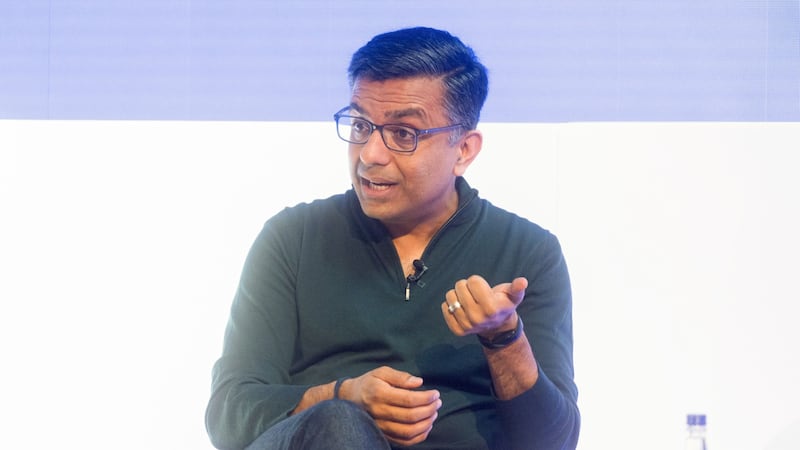Lero, the Irish Software Research Centre based at the University of Limerick has just won a software development contract with the European Space Agency.
Worth €400,000, Lero will control the €300,000 with the balance earmarked for a collaborator in Gothenburg, Sweden.
This is Lero’s third contract with ESA, a linkup which is helping to develop the centre’s reputation for engagement with space-related research activity.
These kinds of contracts are extremely valuable to Ireland, says Lero director and professor of software engineering at University of Limerick Prof Mike Hinchey.
“Ireland has been successful in getting ESA contracts. This is good for the economy but is also valuable for training researchers and they in turn are valuable to industries outside of space science. It is a great opportunity for Ireland, and there is still an opportunity for Ireland to advance in this area,” says Hinchey.
Lero is a case in point. It is winning contracts and making it easier for the centre and its industrial and academic research collaborators in all of Ireland universities and Dundalk Institute of Technology to link with contractors abroad.
Hinchey argues strongly that what looks like an exclusively space-related application initially may become valuable in down to earth applications soon after.
Cross-overs
The cross-overs are more readily identified than one might think.
“Space exploration tells us about the earth and the environment and things we might need to worry about in the future, but software techniques being used in space can be reapplied here. It is about software process improvement where you look to improve the process as a way to reduce costs. It is applied in a wide range of areas from financial services through to medical devices,” he says.
In fact there is an imperative on bodies in receipt of funding to seek ways to reapply the intellectual property in order to increase the return achieved on the initial research investment.
“ESA requires that funded people take these ideas and use them in areas outside of space exploration. People say we are spending all of this money on space research but it is being reapplied in other areas.”
In a space context one error could lead to the complete failure of a mission, a costly loss of a large investment, so error must be avoided at all costs. This imperative becomes even stronger if a human is also in the loop. “If it is a manned flight there is no tolerance for error whatsoever,” Hinchey says.
But bring this down to earth and the desire to avoid error remains as strong. Duff software can shut down a bank or scramble ATMs or disrupt the smooth running of your family car.
Protection against system failure will become essential as companies move to develop autonomous cars where even the driver is a passenger. And we are almost at that point with commercial aircraft that can land by themselves if the pilots are incapacitated.
“We can apply this to a lot of industries, we are relevant to them. Space does lots for the software industry but it is also true the other way around,” says Hinchey.
Work at Lero feeds directly into these kinds of applications. Hinchey's first contract with ESA involved research that concluded with the writing of a book, Autonomy Requirements Engineering for Space Missions, which was co-authored by Hinchey and Dr Emil Vassev, also of Lero.
Applications
The research and book map out what is required to achieve a mathematical-based method able to assess software performance in critical applications where error is not tolerated.
Lero is developing methods to test software to confirm it works long before the same software can be used in mission-critical applications in space.
“It does not involve artificial intelligence but there are artificial intelligence aspects to it,” he says. “The maths approach allows you to express exactly what you want the system to do and then the maths will be able to show whether the software will or will not do this.”
The work done in preparing the book is being used in the new ESA contract. Spacecraft must have a high level of autonomy given the delays in getting a radio signals to travel to and from a distant satellite such as Rosetta. This means more processing power but also multicore processing to increase autonomy without having to carry more weigh.
Hinchey will use his test systems to ensure that multiple processors running won’t in turn generate errors in other areas. “This doesn’t guarantee something might not go wrong but it reduces the chances of this,” he says.
Lero has also recently benefitted from an injection of €39 million in State funding for the renamed centre which used to include the term engineering. Software engineering continues but Lero now takes a broader approach to software development, he says.
This is the third State grant renewal that Lero has received and which will keep it funded through 2020. It celebrates its 10th birthday next November.
The grant will also allow Lero to boost numbers of academics, post docs and PhD students supported from about 170 now to the 240 to 250 range.
Ireland has quite an active space programme, but not many people realise it. Companies and academic researchers regularly sign up for projects involving contractors to the agency, with our engagement facilitated by Enterprise Ireland (EI).
EI is the designated body for assisting Irish access to ESA contracts but also for funding under the EU’s science budget Horizon 2020 and a collection of other programmes.
Ireland was involved in the hugely important and ongoing Rosetta mission to drop a lander on the surface of a comet. This was achieved last November although technical failures meant the Philae lander did not manage to anchor itself onto the surface. An unlucky bounce left the lander in the shade, unable to recharge its solar powered batteries.
Wealth of data
Yet the lander was a success despite this given its scientific instruments still managed to return a wealth of data before it switched itself off. And the Rosetta orbiter continues to circle Comet 67P/Churyumov-Gerasimenko, recording data all of the time as the comet warms up and starts to discharge a trail of dust and gas as it approaches the sun.
Irish scientists were involved in designing the mission starting 20 years ago, software for the mission was written in Ireland, electronics for the spacecraft were designed and built in Ireland, and one of the main controllers of the mission, Laurence O’Rourke, was born and raised here.
Astronomy Ireland has organised a lecture this evening involving one of the main scientists involved in the mission, Dr Pedro Lacerda from the Max Planck Institute in Germany.











